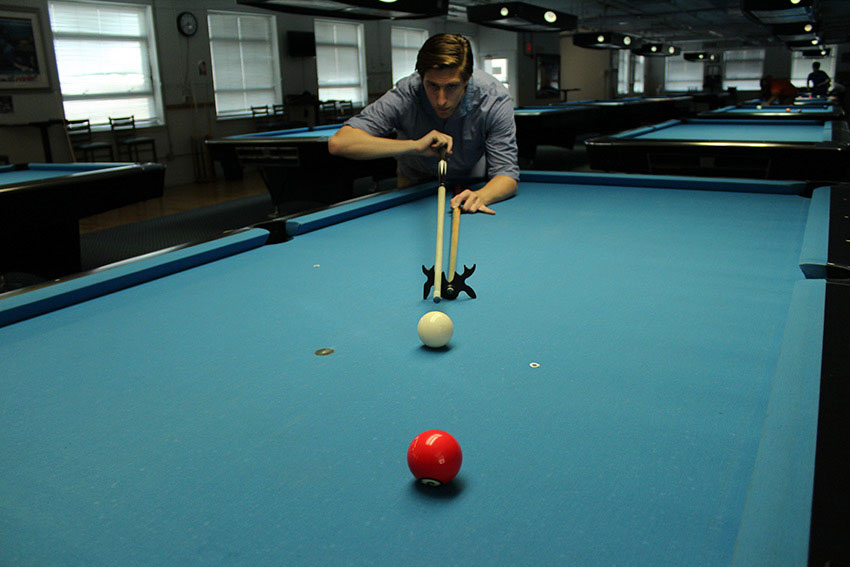Without a proper bridge it will be very difficult to improve as a pool player. The bridge is probably the area where most beginner players just are unaware of the best way to create a pool bridge. First off a bridge is what is created by your non cue holding hand so that you can move the cue back and forth in a straight line. There are many different types of bridges for different situations, but all bridges have some common principles.
A good pool bridge needs to:
- Have a solid foundation
- Be able to move the cue smoothly
- Be able to keep the cue on a straight line accurately
Examples of Bad Bridges
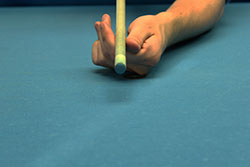
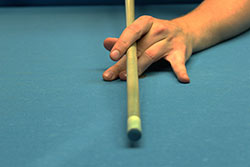
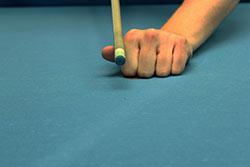
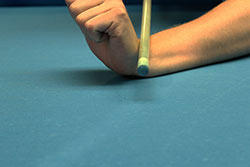
As long as you have these common principles with your bridge then you will have a strong base with which to improve you accuracy. If your pool bridge is weak or it doesn’t allow you to deliver your cue comfortably then the number of balls you make will suffer.
Types of Bridges
Open Bridge
The open bridge may be the easiest bridge to learn for beginners. Its fairly easy to set up, gives a solid foundation, and allows for the most visibility when stroking the cue ball. There are many different types of open pool bridges that can be used for different situations, and depending on the player you may decide to use variations of the open bridge for whatever is most comfortable for you.
To create a basic open bridge squeeze your thumb and pointer finger together to make a groove for your cuestick and then place your palm on the pool table to line up the shot. Make sure that you palm and finger are planted to give yourself a stable pool bridge that won’t move as you hit the ball.
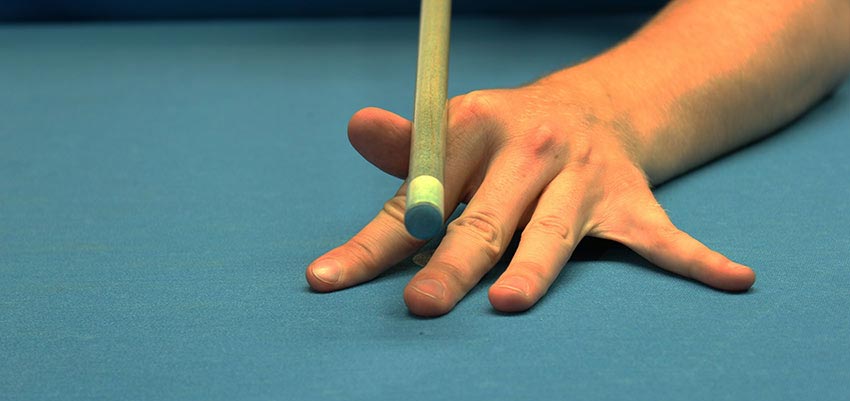
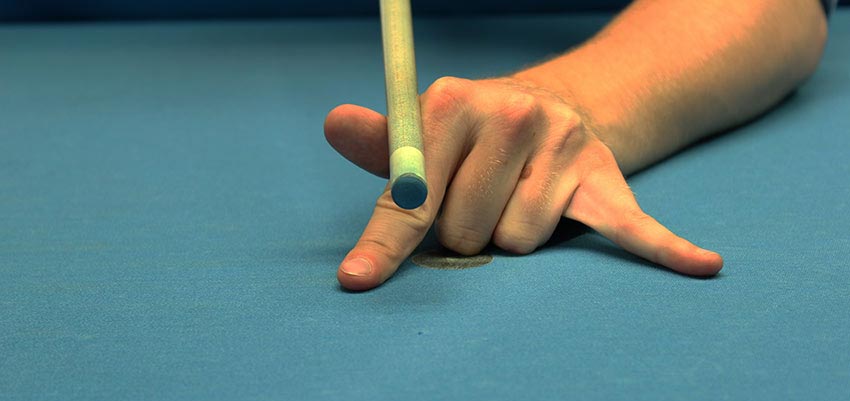
Closed Bridge
A disadvantage of the closed pool bridge is that it is harder to see where you are hitting the cue ball since the finger the is closing the cue on your bridge hand is partially blocking your view.
This can be an issue with shots that demand ultimate precision, but at the end of the day it all is up to your preference. There are players who prefer open over closed pool bridges and vice-versa so whatever you choose, always make sure taht you are comfortable with the shot.
In order to make a closed pool bridge, make a loop around the cue stick with your forefinger and squeeze it against your thumb. Make sure not to squeeze too tightly in order to give the cuestick room to move between your bridge. Use your palm and your other three fingers for stability on the table and that should complete your closed bridge.
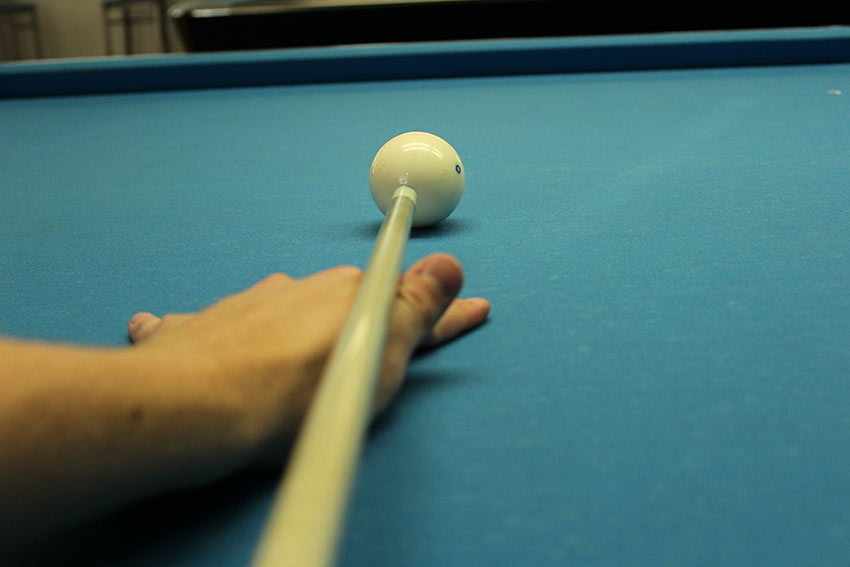
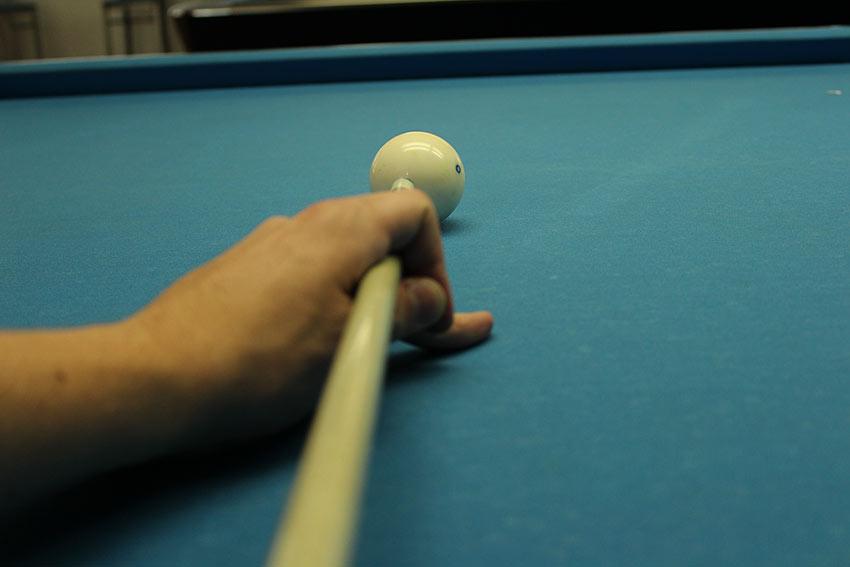
Ball Close to the Rail
When the cue ball is about a diamond away from the rail another bridge you can try is the rail bridge. Place your hand on top of the bumper and touch your thrumb to your middle finger.
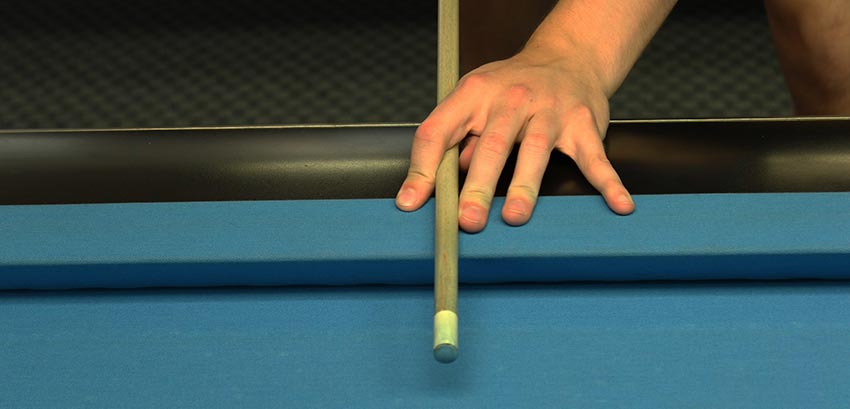
From here put your index finger over the cue to make a semi closed bridge that is made up of your thumb, index finger, and the actual table all helping to guide the cue. This one can be tricky to get used to, but this type of situation can come up quite a bit o having this bridge in your arsenal can be useful.
Using the Rest
Despite what some poeple may tell you the rest is a very important part of pool, even though recently there are alternatives to using the bridge, it is still the most used tool when a player can’t reach a shot. In order to use the bridge correctly line up the shot first and put the bridge on that line. Then put the cue stick on the bridge and do a few practice strokes before actually hitting the ball. There are two ways to use the mechanical bridge. One way is to put your elbow out to the side and and just move your forearm back and forth while gripping the cue with your fingers. The other way is to have your elbow underneath where you are holding the cue similar to throwing a dart.
